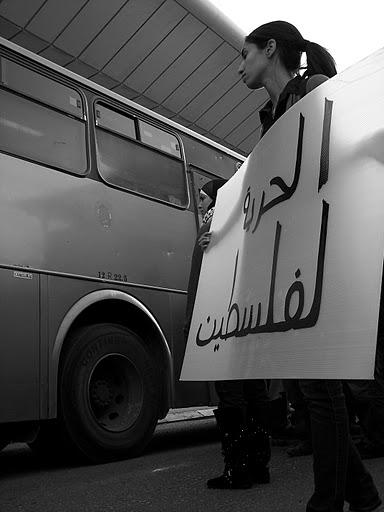Month: November 2011
-
Gaza lives on
16 November 2011 | Al Jazeera English The Israeli blockade may have taken a heavy toll on Gazans, but this film reveals life and hope among the devastation. Since 2007, most of the approximately 1.5 million Palestinians living in the Gaza Strip have suffered gravely from an intensified land, air and sea blockade imposed by Israel.…
-
Independence Day in the Buffer Zone
by Nathan Stuckey 16 November 2011 | International Solidarity Movement, Gaza Twenty three years ago today the Palestinian declaration of independence was released. Written by Mahmoud Darwish, and unveiled to the world by Yasser Arafat in Algiers where he was living in exile like millions of other Palestinians. Today, in Beit Hanoun, we, the Local…
-
Freedom Riders: “I felt like I was witnessing history”
by Ben Lorber 15 November 2011 | International Solidarity Movement, West Bank Earlier today, 7 Palestinian activists were arrested as part of the Freedom Rides attempt to board segregated buses going from the West Bank into occupied East Jerusalem. Palestinians, Israelis and ISM activists waited at a bus stop outside the illegal settlement of Psagot,…


